DATA SOURCE(S): 1,2,5,14,36
Common Name(s): Obeche, ayous, samba, wawa, African whitewood
Scientific Name: Triplochiton scleroxylon
Distribution: Tropical West Africa
Tree Size: 65-100 ft (20-30 m) tall,
3-5 ft (1-1.5 m) trunk diameter
Average Dried Weight: 23.8 lbs/ft3 (380 kg/m3)
Specific Gravity (Basic, 12% MC): 0.32, 0.38
Janka Hardness: 440 lbf (1,960 N)
Modulus of Rupture: 8,680 lbf/in2 (59.8 MPa)
Elastic Modulus: 934,000 lbf/in2 (6.44 GPa)
Crushing Strength: 4,310 lbf/in2 (29.7 MPa)
Shrinkage: Radial: 3.1%, Tangential: 5.3%,
Volumetric: 8.7%, T/R Ratio: 1.7
Color/Appearance: Heartwood tends to be a pale yellow, with the sapwood not clearly differentiated from the heartwood. Colors darken slightly with age. Can be prone to fungal staining if not dried properly. Interlocked grain can give a ribbon-stripe appearance on quartersawn surfaces similar to satinwoods and sometimes compared to primavera.
Grain/Texture: Grain tends to be slightly interlocked (though sometimes straight), with a medium to coarse texture and good natural luster.
Rot Resistance: Rated as non-durable; poor termite and borer resistance. (It is not uncommon to find borer holes and/or fungal discoloration on wood that has not been properly processed and dried.)
Workability: Generally easy to work, though interlocked grain can cause some rough surfaces in some machining operations. Carves, stains, glues, and finishes well.
Odor: Has a strongly unpleasant odor when green, which mostly disappears once dried.
Allergies/Toxicity: Although severe reactions are quite uncommon, obeche has been reported as a sensitizer. Usually most common reactions simply include eye, skin, and respiratory irritation, as well as runny nose, sneezing, hives, and asthma-like symptoms. See the articles Wood Allergies and Toxicity and Wood Dust Safety for more information.
Pricing/Availability: Lumber is sometimes available, though it’s primarily exported as veneer or plywood. Obeche is relatively inexpensive for an imported hardwood.
Sustainability: This wood species is not listed in the CITES Appendices, and is reported by the IUCN as being a species of least concern. Obeche is also grown on plantations within its natural range.
Common Uses: Veneer, plywood, carvings, furniture, and interior millwork, as well as beams, posts, and planks in local house construction. Obeche is also used occasionally as an alternate tonewood for electric guitar bodies.
Comments: This African hardwood is used locally throughout its natural range, and as a result, it known by a great number of regional names, such as ayous, obeche, samba, and wawa. Although the most common name used in commercial trade seems to be ‘obeche,’ there’s perhaps no name more fitting to describe this wood than the indistinctive title of ‘African whitewood.’
In most instances, the wood grain is rather bland and nondescript in appearance. Much like basswood (Tilia spp.), the wood is sometimes used more or less as a filler—a blank canvas that can be stained, painted over, carved, or used in more utilitarian purposes. Obeche wood tends to be very soft and lightweight, but also has a decent strength-to-weight ratio.
Images: Drag the slider up/down to toggle between raw and finished wood.
A special thanks to Steve Earis for providing a wood sample of this wood species.
Identification: See the article on Hardwood Anatomy for definitions of endgrain features.
Porosity: diffuse porous; growth rings usually visible due to change in color of wood fibers and/or marginal parenchyma (occasionally present)
Arrangement: solitary and radial multiples
Vessels: large to very large, few to very few; tyloses sometimes present
Parenchyma: diffuse-in-aggregates, and sometimes banded (marginal)
Rays: medium to wide width, normal spacing; despite width, rays are not always conspicuous without maginciation
Lookalikes/Substitutes: When used locally, cheesewood (Alstonia congensis) can be used in place of obeche, since both woods have very similar weight and appearance. However, cheesewood has pores very commonly occurring as radial multiples of two to five pores, as well as banded parenchyma, features lacking in obeche. When exported to North America, obeche can sometimes be used in place of other lightweight and light-colored diffuse porous hardwoods such as basswood (Tilia americana) or yellow poplar (Liriodendron tulipifera), though these woods both have much smaller and more frequent pores than obeche.
Notes: Storied structures present can form ripple marks on some pieces.
Triplochiton only contains two recognized species, T. scleroxylon (represented on this page), and T. zambesiacus. The latter, per its specific epithet, is endemic to the Zambezi river valley (and its tributaries) in Southern Africa. It’s sometimes called wine cup tree or Zambezi oak, though it’s comparatively much more obscure than T. scleroxylon and isn’t used commercially for timber. One source reports that the wood is hard and is used for making yokes.[1]Wild, H. (1961). Flora Zambesiaca 1(2), p. 517.
Related Content:
References[+]
| ↑1 | Wild, H. (1961). Flora Zambesiaca 1(2), p. 517. |
|---|

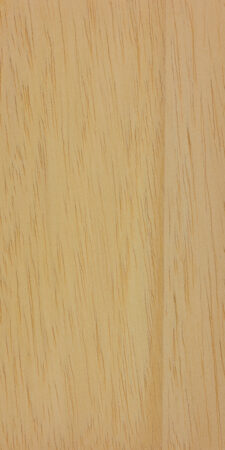
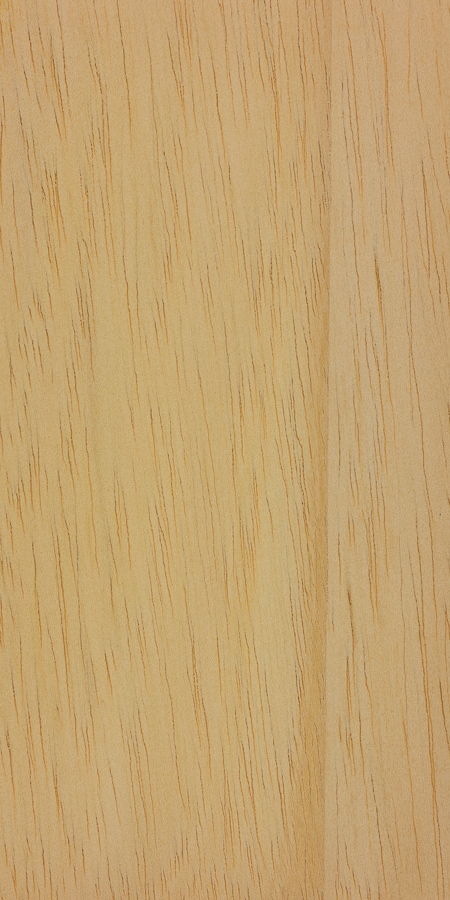
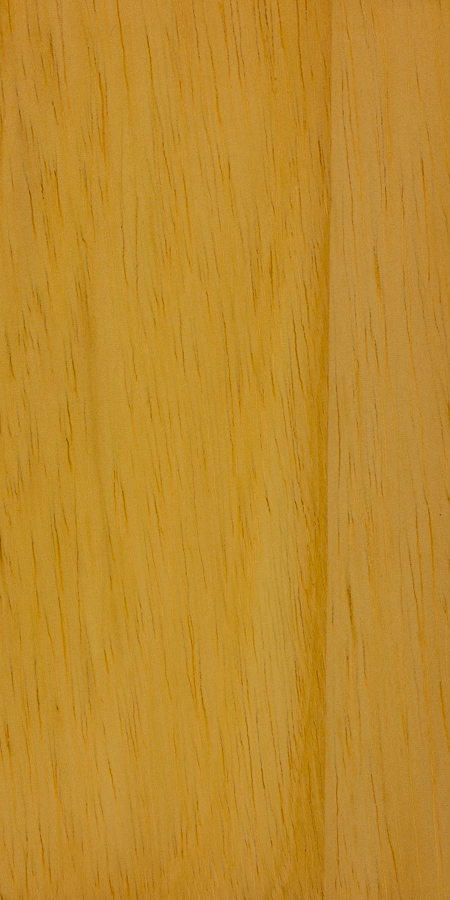
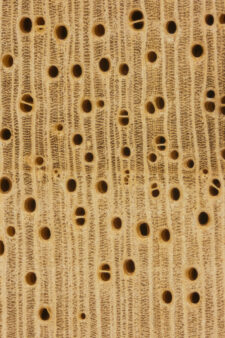

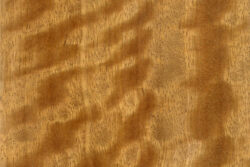






How long does it need to grow before felling ?
I was looking for the name of the wood in a sauna once – and I found it on your site. Kudos; bookmarked for future reference
Excellent summary from the wood Database and interesting comments. My extensive research for a through double neck 6/12 string guitar I plan to build, has revealed the following about Obeche but I have not played a guitar made of Obeche myself. Once dry, Obeche is exceptionally stable and was used on the solid bodies of Burns in the 1960s, Shergold/Hayman of the 70s and 80s and most recently on the TV Jones Model 10 and PRS Mira X and Starla X guitars. Also in the Martin CF1 and CF2 archtops with braced, Spruce / Obeche 3 ply tops. Obeche possesses exceptional… Read more »
The color-dyed and laminated brand called Colorply (I think manufactured in Italy) is made from African Obeche. Here’s a throw-top made from the stuff.
Excellent as bench seating in sauna. Used over 25 years with no rot, staining or discolouration. Key feature is that it feels relatively cool to the skin even when the sauna is cranked hot. Better than cedar or pine in this regard although cedar is first choice for sauna walls and ceiling.
I used to it for building sailing dinghy centreboards and rudders. They would be fibreglass sheathed (8oz and polyester resin). Chosen because it is easily worked, stiff for its weight and the resin adhesion is good.
Used by Paul Reed Smith Guitars Private Stock Department as bodywood with a quilted or flamed Maple top glued on it. It sounds similar to Mahogany although a little bit brighter.
used in tesla dashboards
Lightweight, strong wood with minimal knots. Used for frame construction of racing boats (hydroplanes) because of strength/light weight/straightness. Can be a minor irritant when milling/sanding – recommend using a respirator/mask.